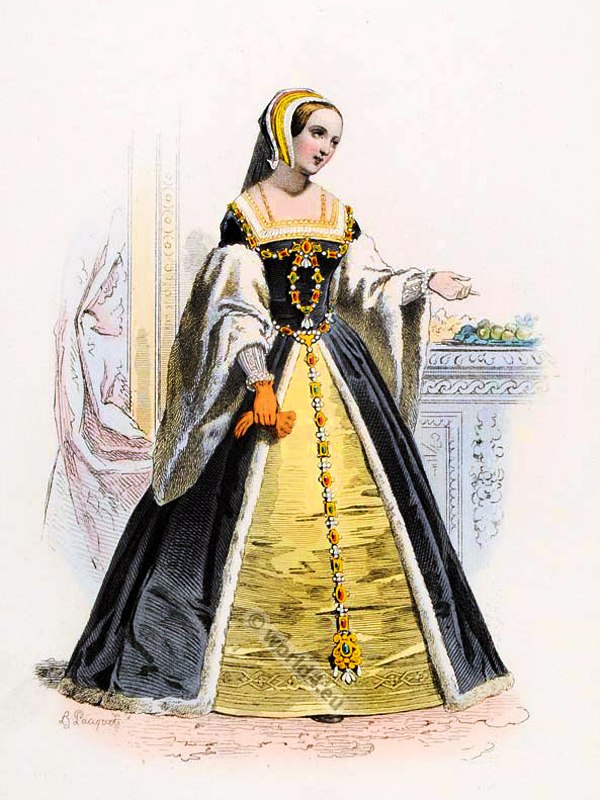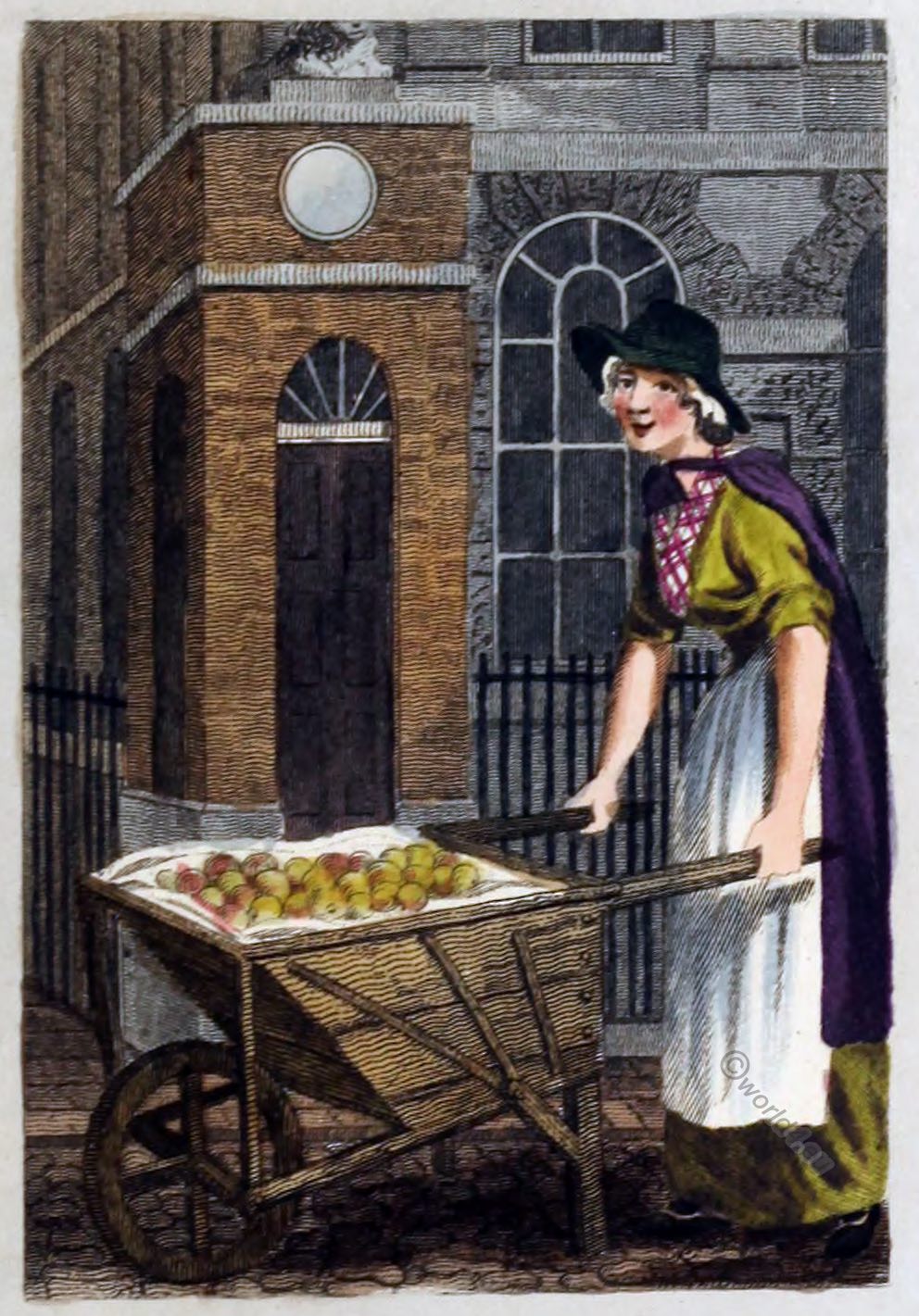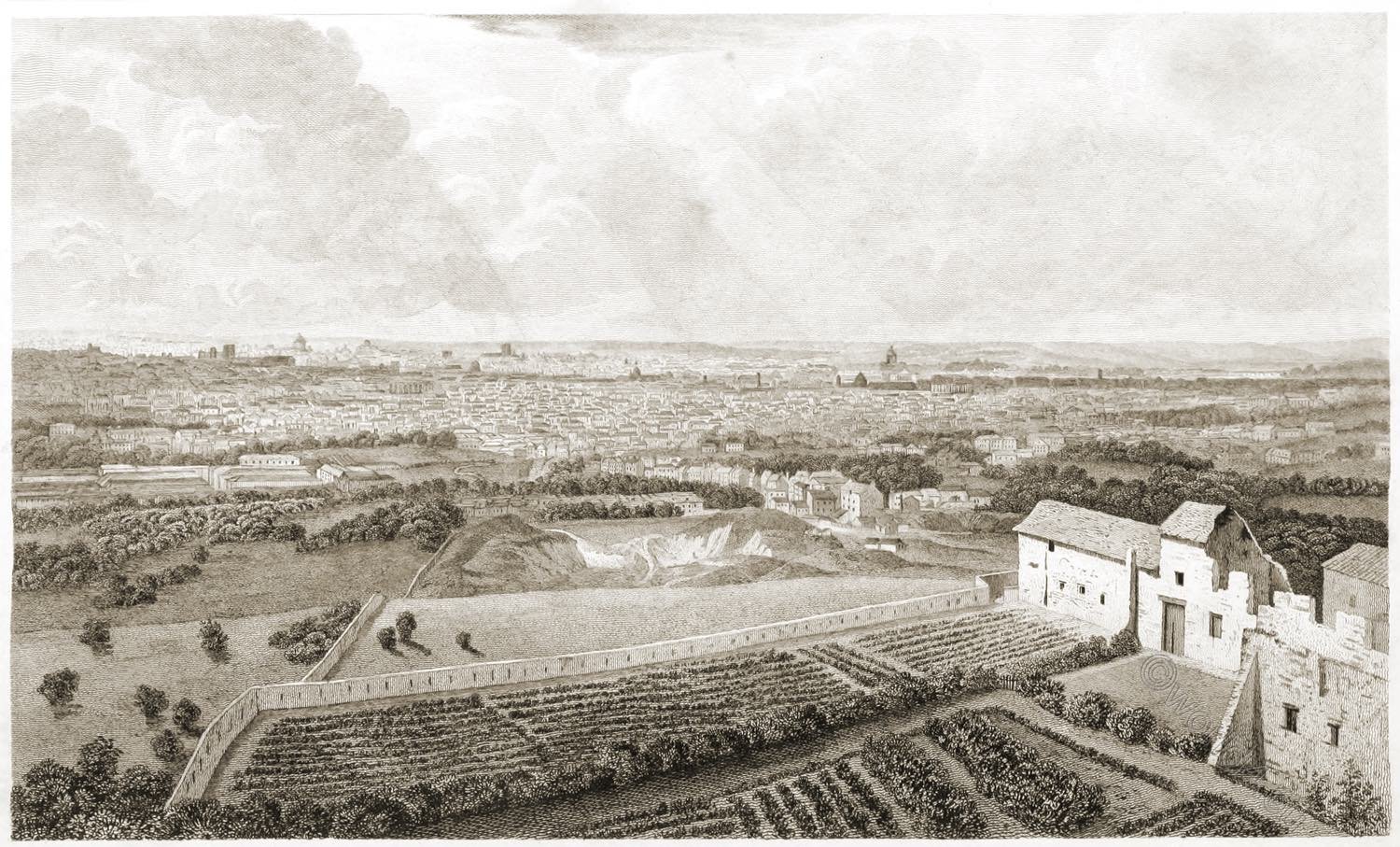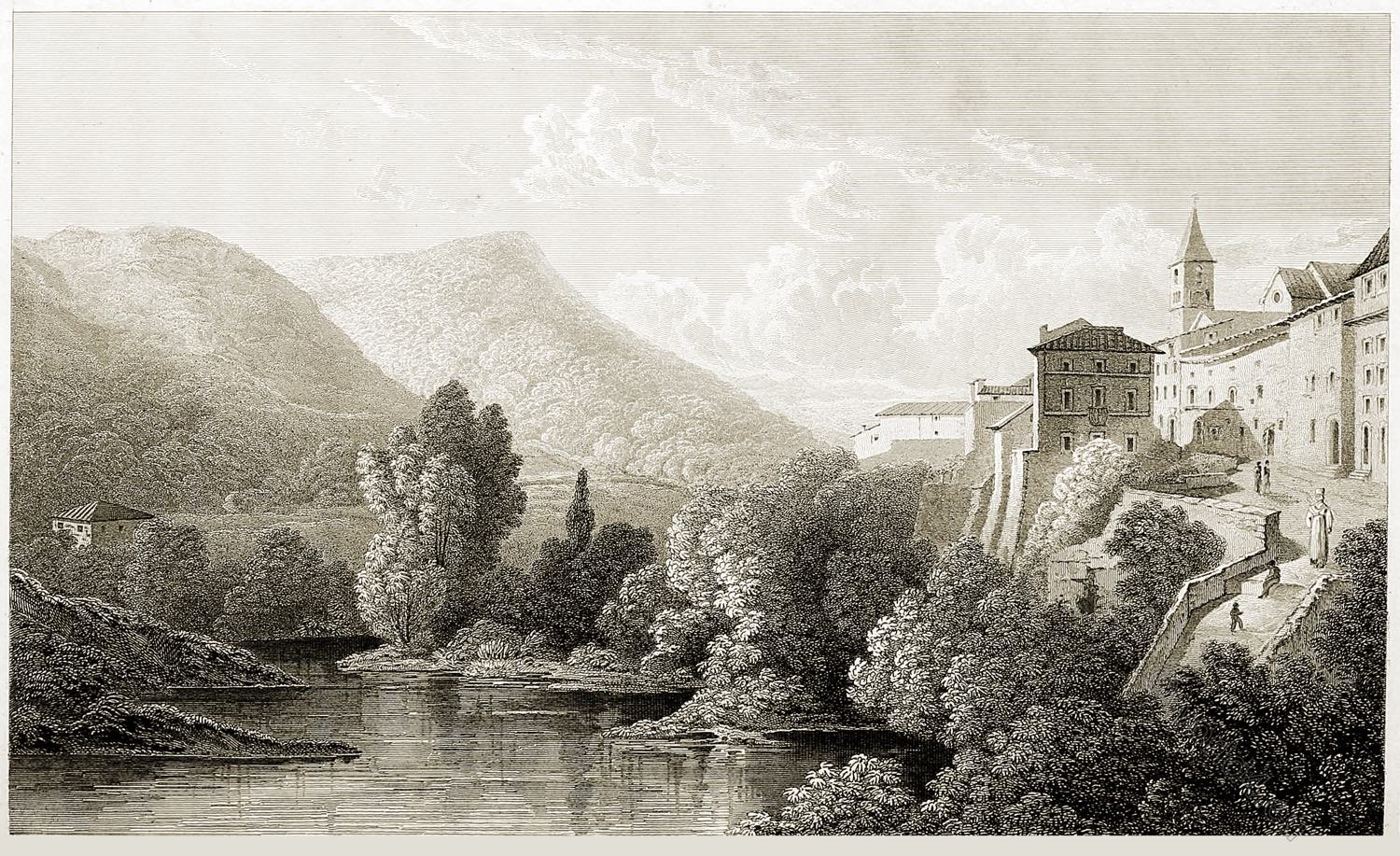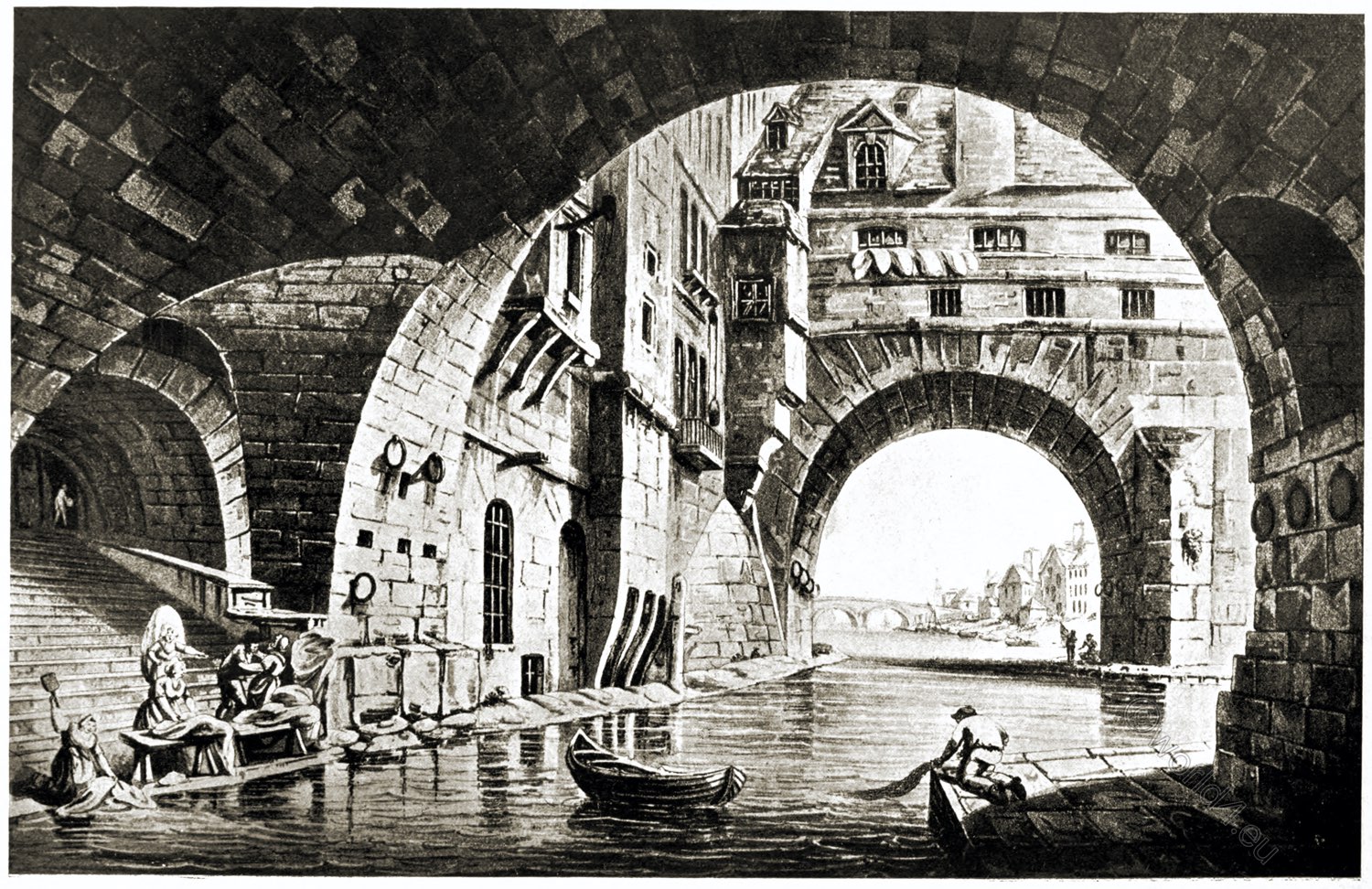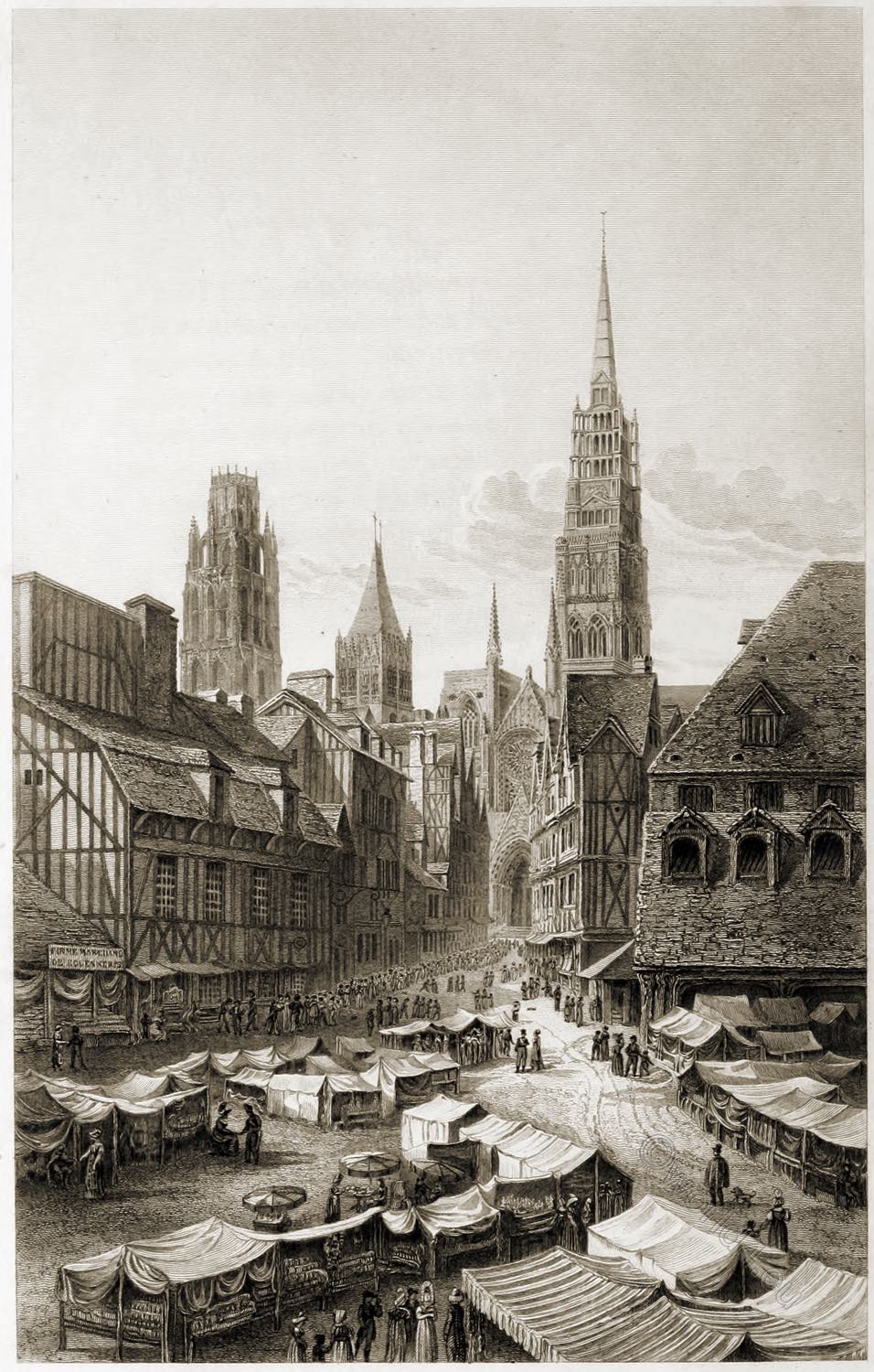
ROUEN, FROM THE HAUTE-VIEILLE-TOUR.
THE Upper Old Tower has been so named from a tower which existed on this spot for a long period. On this place stood the palace which formerly was the seat of sovereignty of the Dukes of Normandy, and which was destroyed by order of Philippe Auguste at the time he conquered this country, the more effectually to obliterate all remains of the power of its ancient dukes.
The square of the Upper Old Tower is surrounded by extensive buildings appropriated to the sale of divers sorts of merchandise. Every Friday there is a public market, which is much frequented; the halls are open from six in the morning until noon.
Each particular kind of ware has its appropriate hall; that for mercers’ goods, or Rouennerie, is 270 feet long by 50 wide; that for cloth, linen, cotton, thread, &c. is 200 feet in length.
We ascend to the mercers’ hall by a staircase ornamented with Corinthian columns, which terminates in a pyramidal form. From this staircase we enjoy at one view a prospect of the square, of the Rue de l’Epicerie, which opens out into the Place de la Calende, and the view is bounded by the cathedral, ornamented with its towers and with its beautiful central spire, towering above the church to the height of 380 feet.
Engraved by Edward Finden.
Source: French scenery: from drawings made in 1819 by Robert Batty (1788 or 1789-1848). London: Published by Rodwell & Martin, New Bond Street, 1822.
Discover more from World4 Costume Culture History
Subscribe to get the latest posts sent to your email.

